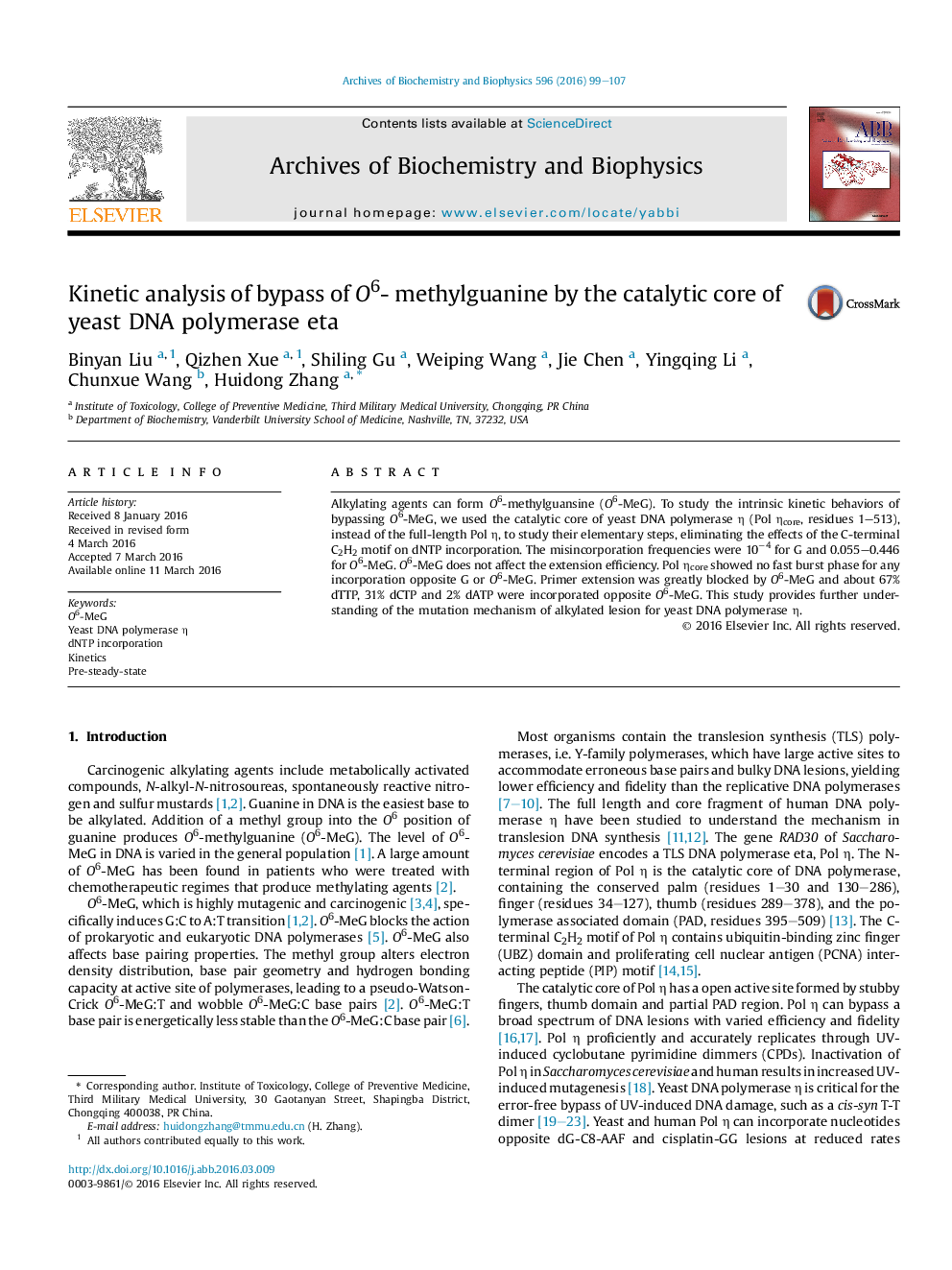| Article ID | Journal | Published Year | Pages | File Type |
|---|---|---|---|---|
| 1924774 | Archives of Biochemistry and Biophysics | 2016 | 9 Pages |
•Bypass of O6-MeG was kinetically studied by the catalytic core of yeast DNA polymerase η (Pol ηcore).•The misincorporation frequencies were 0.055–0.446 for O6-MeG.•Pol ηcore showed no fast burst phase for any incorporation opposite O6-MeG.•O6-MeG greatly blocked DNA replication and 67% dTTP, 31% dCTP and 2% dATP were incorporated opposite O6-MeG.
Alkylating agents can form O6-methylguansine (O6-MeG). To study the intrinsic kinetic behaviors of bypassing O6-MeG, we used the catalytic core of yeast DNA polymerase η (Pol ηcore, residues 1–513), instead of the full-length Pol η, to study their elementary steps, eliminating the effects of the C-terminal C2H2 motif on dNTP incorporation. The misincorporation frequencies were 10−4 for G and 0.055–0.446 for O6-MeG. O6-MeG does not affect the extension efficiency. Pol ηcore showed no fast burst phase for any incorporation opposite G or O6-MeG. Primer extension was greatly blocked by O6-MeG and about 67% dTTP, 31% dCTP and 2% dATP were incorporated opposite O6-MeG. This study provides further understanding of the mutation mechanism of alkylated lesion for yeast DNA polymerase η.
